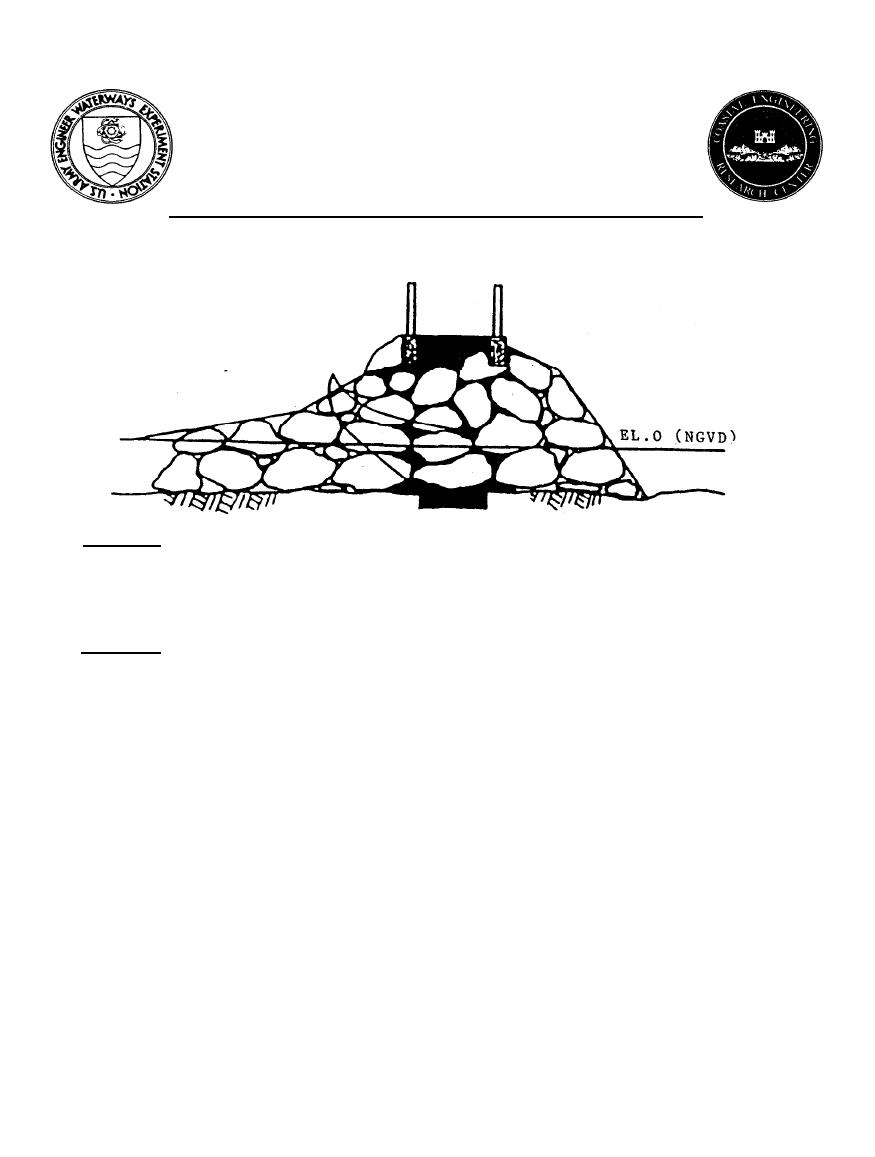
CETN III-47
(3/92)
Coastal Engineering
Technical Note
EXPERIENCE WITH SAND-TIGHTENED COASTAL STRUCTURES
Proposed
Grout
PURPOSE:
To evaluate the effectiveness of various sand-sealing methods
used on permeable coastal structures, as evidenced by site-
specific performance and other available information.
GENERAL:
Rubble-mound coastal structures contain voids between individual
armor units. These voids result in maximum wave energy
dissipation, but also may result in the passage of water and
sediment.
The volume of sediment passing through breakwaters,
jetties, and groins can be substantial, and result in increased
channel shoaling, higher maintenance dredging costs, and
significant loss of beach material.
"Sand tightening" or "sand sealing" of coastal structures entails
techniques which make them impervious to sand infiltration.
Sealing techniques include the placement of stone, steel,
concrete, bitumen, chemical grout, geotextile fabrics, and/or
demolition agents in coastal structures (CETN-111-28).
Each sand
tightening method is utilized to reduce structure permeability.
Care must be exercised, however, since decreasing structure
permeability may increase runup, overtopping, wave reflection,
and uplifting forces which can create structural instability.
It is good design practice and usually cost effective to
incorporate sealing methods into the original construction of
coastal structures. H o w e v e r , with older structures, sand
tightening can only be accomplished through rehabilitation.
US Army Engineer Waterways Experiment Station, Coastal Engineering Research Center
3909 Halls Ferry Road, Vicksburg, Mississippi 39180-6199


 Previous Page
Previous Page
